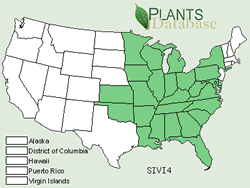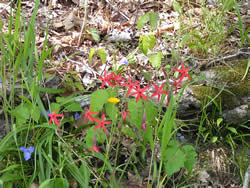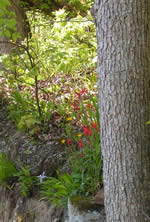Plant of the Week
Fire Pink (Silene virginica L.)
By Kirk w. Larson
Although the fire pink is not large, it is one of our most conspicuous plants because of its brilliant scarlet or crimson color. The flowers are 1 to 1.5 inches (3 to 4 cm) in size with five narrow and distinctively notched petals. The plant is a short-lived perennial most often found in rich woods, rocky slopes, dry open woodlands, or meadows. It has a broad range across most of the eastern half of the United States except for the far northeastern states. The fire pink blooming period is from April to as late as August.
The fire pink is a member of the carnation family (Caryophyllaceae). Like many Silene species, the plants have sticky-hairy glandular stems, inflorescence, and upper leaves. Basal leaves are 1 to 1.5 inches to 4 inches (4 to 10 cm), lanceolate to spatulate; stem leaves are up to 6 inches (15 cm) long, opposite and in 2 to 8 pairs. The sticky substance acts as natural flypaper to trap smaller insects, which is the reasoning behind its other common name of catchfly. The brilliant flowers attract the ruby-throated hummingbirds, which are one of the primary pollinators for the species. The plants grow in size from 6 inches to 24 inches (15-60 cm).
Although widespread, it is relatively uncommon and considered rare at the edge of its range in many locales. The species is available at many plant nurseries in plant stock or seed.





